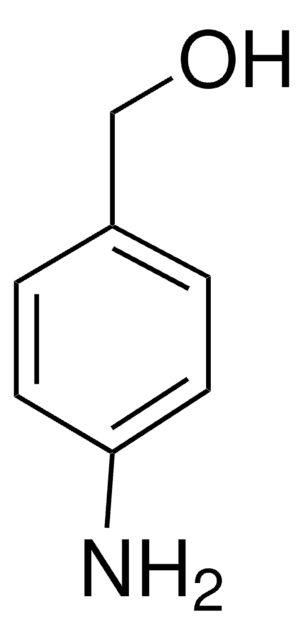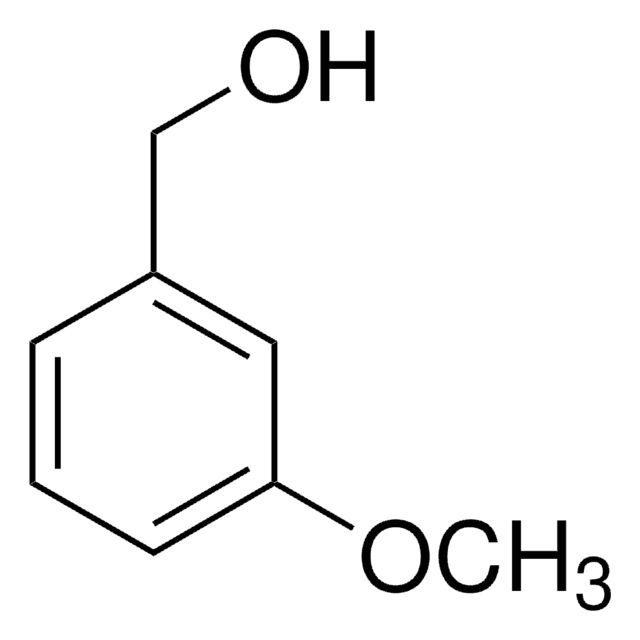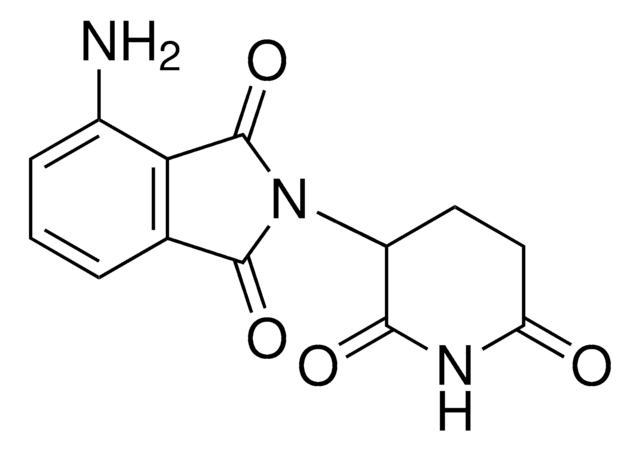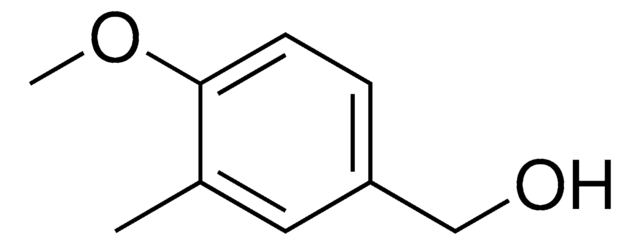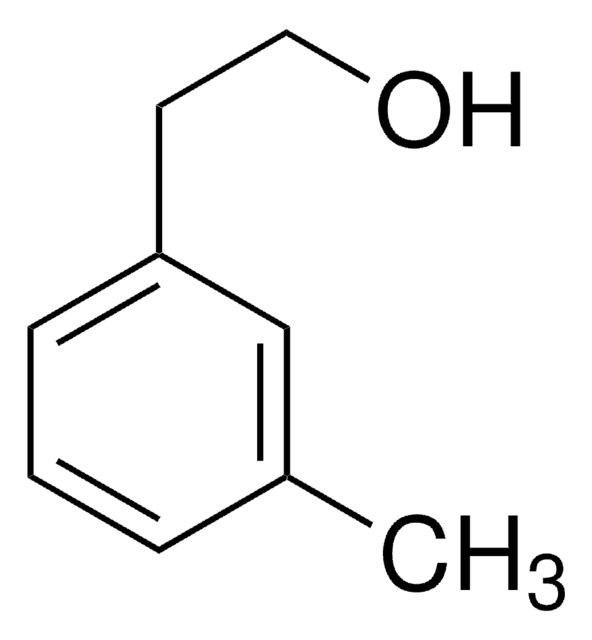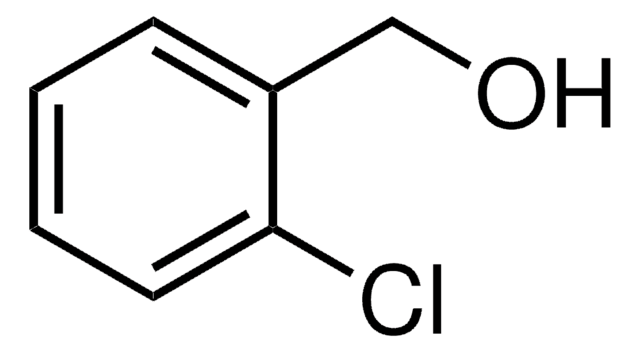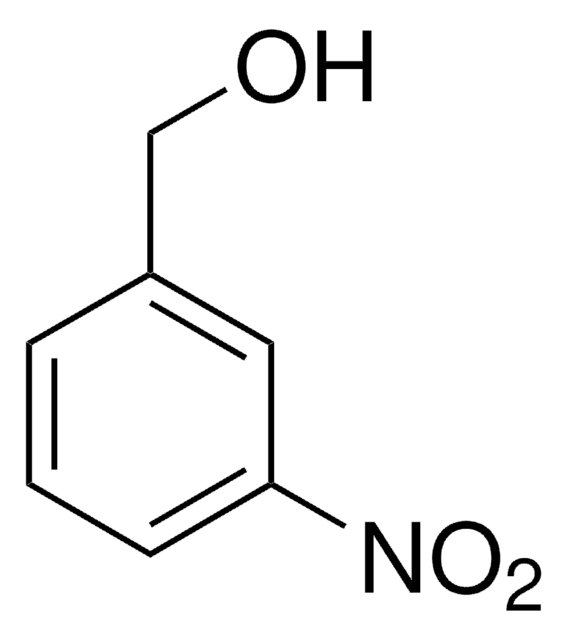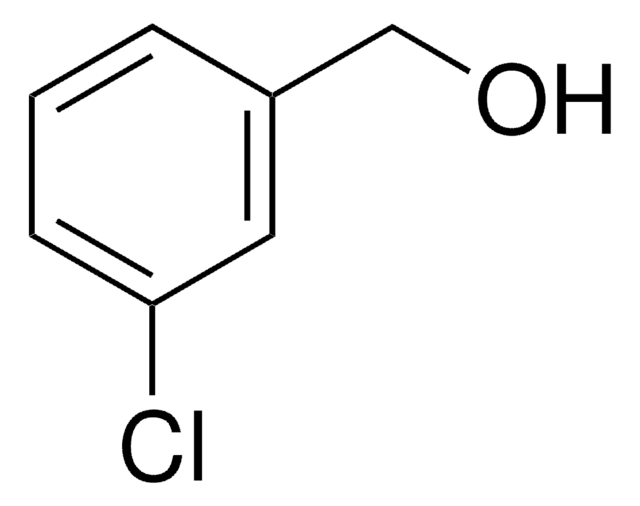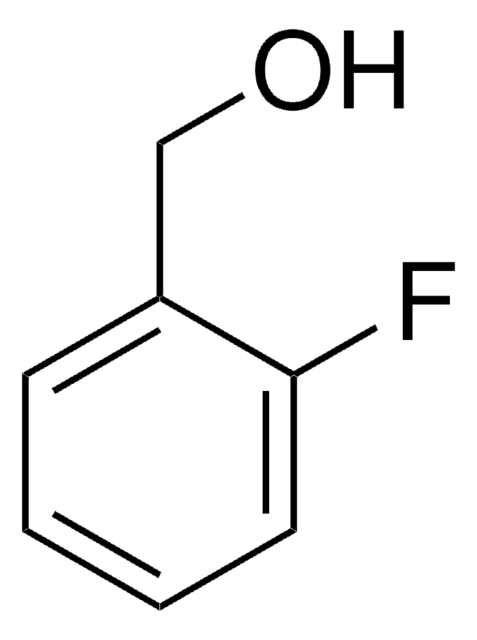All Photos(1)
Linear Formula:
CH3C6H4CH2OH
CAS Number:
Molecular Weight:
122.16
EC Number:
MDL number:
UNSPSC Code:
12352100
PubChem Substance ID:
NACRES:
NA.22
Recommended Products
Assay
98%
form
liquid
refractive index
n20/D 1.534 (lit.)
bp
215 °C/740 mmHg (lit.)
density
1.015 g/mL at 25 °C (lit.)
SMILES string
Cc1cccc(CO)c1
InChI
1S/C8H10O/c1-7-3-2-4-8(5-7)6-9/h2-5,9H,6H2,1H3
InChI key
JJCKHVUTVOPLBV-UHFFFAOYSA-N
General description
3-Methylbenzyl alcohol participates in gas phase hydrogenation of methanolic solutions of isophthaldehyde over a Ni/SiO2 catalyst.
WGK
WGK 3
Flash Point(F)
222.8 °F
Flash Point(C)
106.00 °C
Personal Protective Equipment
dust mask type N95 (US), Eyeshields, Gloves
Certificates of Analysis (COA)
Search for Certificates of Analysis (COA) by entering the products Lot/Batch Number. Lot and Batch Numbers can be found on a product’s label following the words ‘Lot’ or ‘Batch’.
Already Own This Product?
Find documentation for the products that you have recently purchased in the Document Library.
S Fraile et al.
Journal of bacteriology, 183(19), 5571-5579 (2001-09-07)
We have isolated a recombinant phage antibody (Phab) that binds a distinct epitope of the subclass of the sigma(54)-dependent prokaryotic enhancer-binding proteins that respond directly to aromatic effectors, e.g., those that activate biodegradative operons of Pseudomonas spp. The DNA segments
Gas phase hydrogenation/hydrogenolysis of isophthaldehyde over Ni/SiO2.
Keane MA.
Bull. Soc. Chim. Belg., 104(2), 63-67 (1995)
Production of ligninolytic enzymes of the white rot fungus Panus tigrinus.
Leontievsky AA, et al.
Journal of Biotechnology, 32(3), 299-307 (1994)
Chun Chau Sze et al.
Journal of bacteriology, 184(3), 760-770 (2002-01-16)
Pseudomonas-derived regulators DmpR and XylR are structurally and mechanistically related sigma(54)-dependent activators that control transcription of genes involved in catabolism of aromatic compounds. The binding of distinct sets of aromatic effectors to these regulatory proteins results in release of a
S Inouye et al.
Journal of bacteriology, 169(8), 3587-3592 (1987-08-01)
The effect of high-level expression of the regulatory gene xylS of the Pseudomonas putida TOL plasmid on the activation of the xylDLEGF operon was investigated in Escherichia coli. The xylS gene was placed downstream from the tac promoter, and the
Our team of scientists has experience in all areas of research including Life Science, Material Science, Chemical Synthesis, Chromatography, Analytical and many others.
Contact Technical Service![1-[(4-chlorophenyl)(phenyl)methyl]-4-(3-methylbenzyl)piperazine AldrichCPR](/deepweb/assets/sigmaaldrich/product/structures/916/181/2e864deb-9846-44ac-8eea-f4736a68c938/640/2e864deb-9846-44ac-8eea-f4736a68c938.png)
